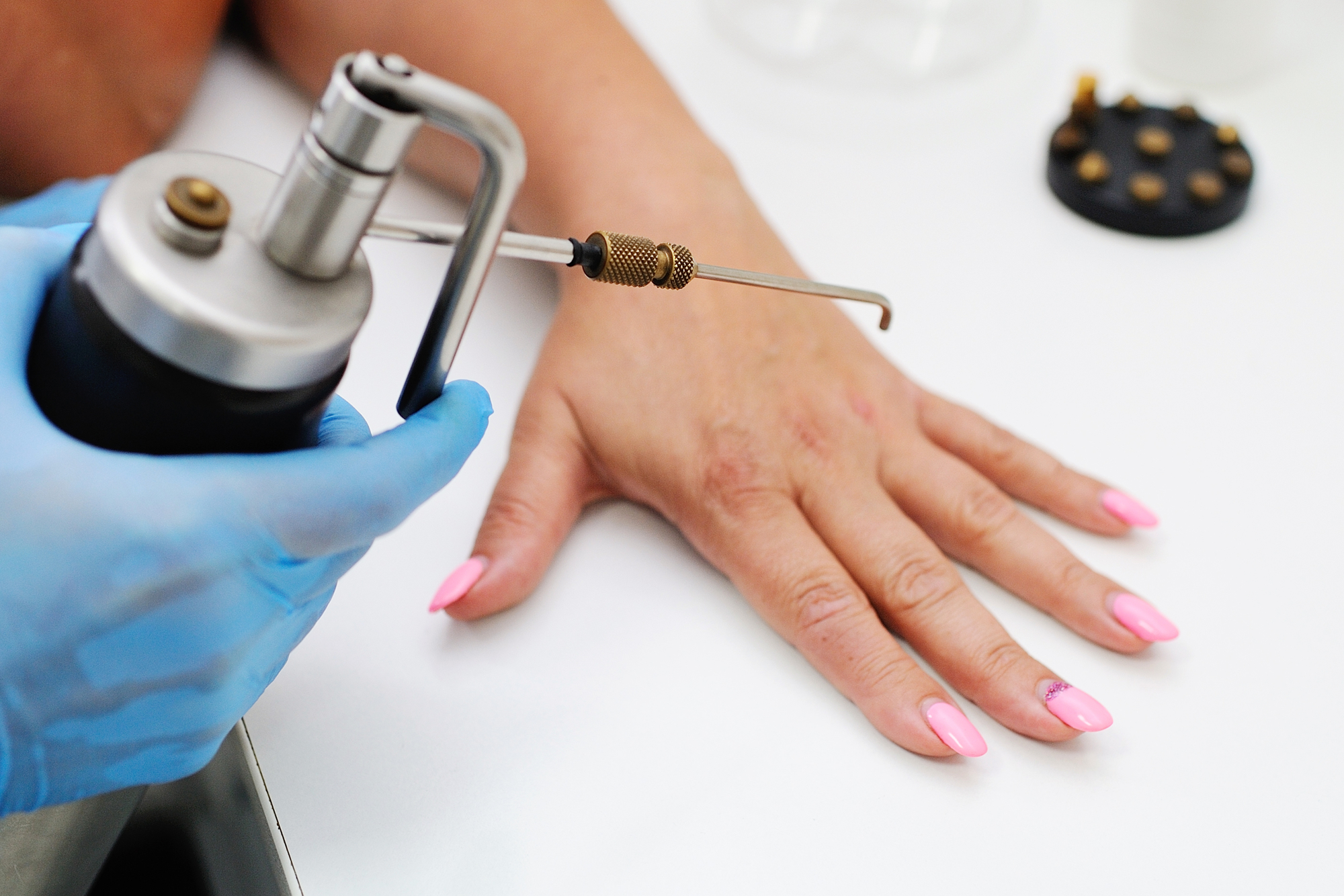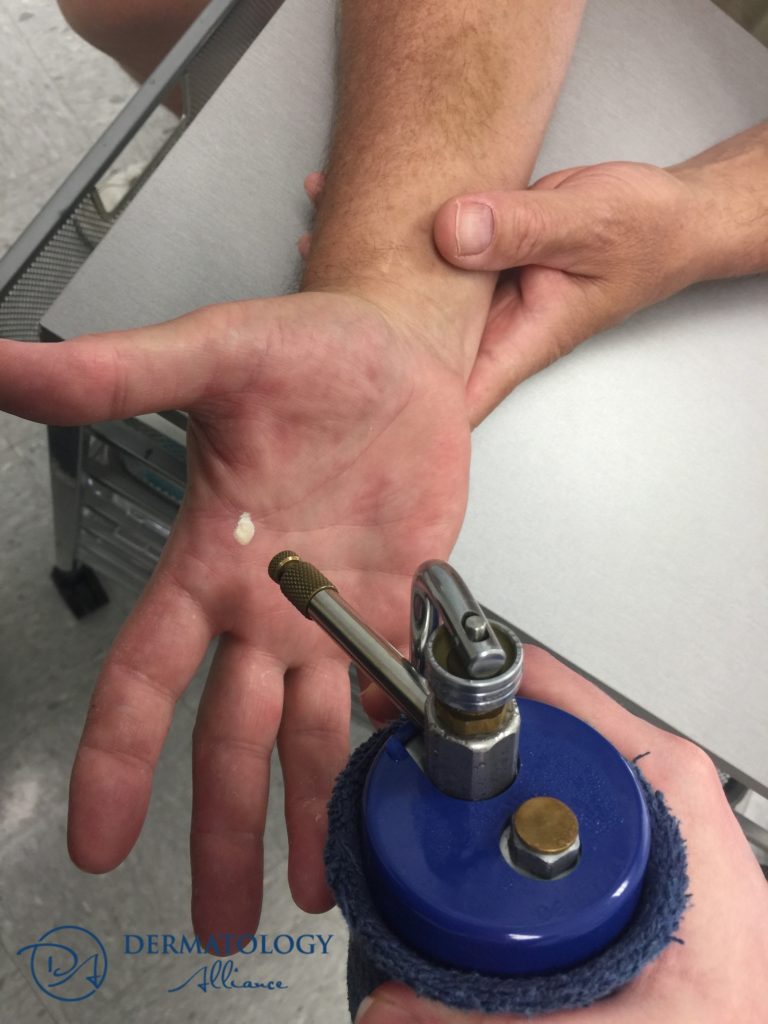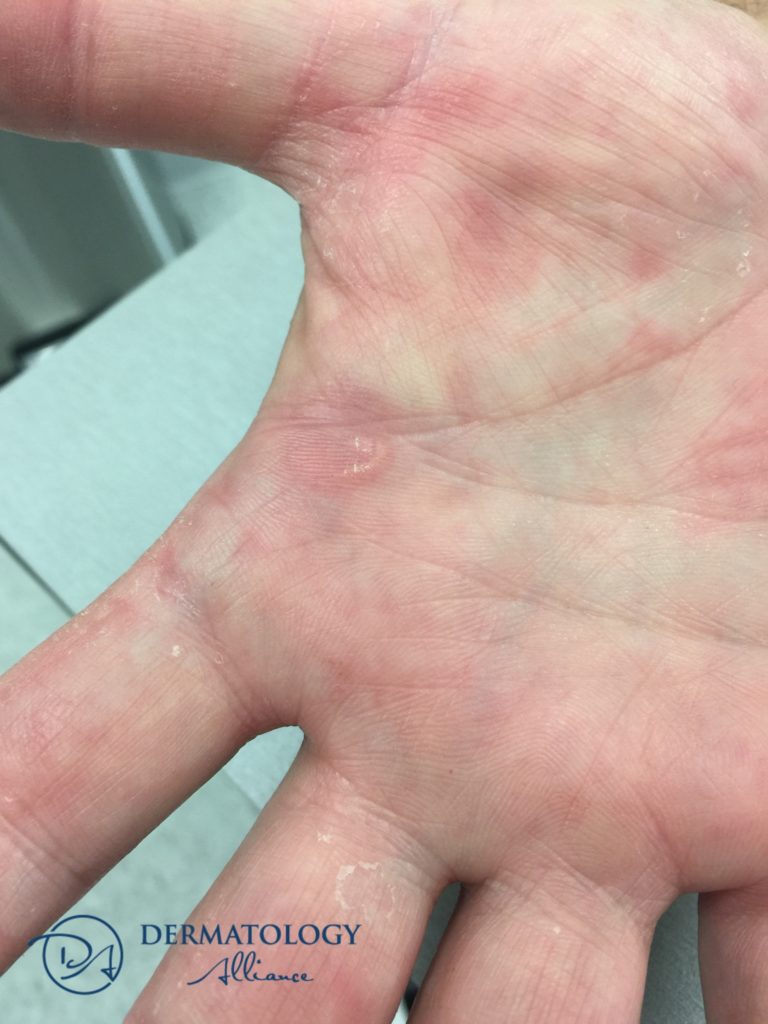Some of us like to try DIY solutions. If we can do it ourselves, why would we pay someone else to do it, right?
If you have a spot, like a wart or a mole, that needs to be removed, you may have considered freezing it at home rather than asking your dermatologist about it. Maybe you think an over-the-counter option is good enough, or you assume the dermatologist is too expensive. Either way, before you rush to the nearest drugstore to buy a freeze spray, make sure you know what to expect.
Will Freezing Remove the Spots On My Skin?
Not all spots can be frozen, but warts and seborrheic keratosis (a type of brown mole) respond well to removal by freezing. However, there’s a big difference between at-home removal and dermatologist removal. Dermatologists not only tailor their approach to your spot, but they have access to a stronger freezing product. This is especially important for a wart, because it needs to be frozen deeply, requiring a lot of energy and a strong product to remove it effectively.
Freezing Warts at Home
Freezing at home relies on a butane spray. There’s a little liquid butane in the can that turns to gas as it’s sprayed. The coldest temperature of that gas is about 100 degrees below zero. Usually, people hold it a few inches away from the spot, so it’s about negative 50 degrees when it reaches the skin. Yes, that’s extremely cold, but it’s not cold enough to freeze deeply. That means they have to spray the butane longer, which really hurts. So, in the hands of most people, butane spray doesn’t effectively remove warts.
Freezing Warts at the Dermatologist’s Office
The dermatologist uses liquid nitrogen, either spraying it on or dropping it on with a Q-tip. Since it’s 320 degrees below zero, it freezes the skin rapidly at a much deeper level than butane. Essentially, it damages the spot quickly and severely so we can remove it. But that also means people have to be very careful with the product.
Why You Should See A Dermatologist For Wart Removal
With a dermatologist, you get expertise and a more effective product to treat your spots. To remove these blemishes, we’re creating a superficial frostbite. That can’t be done haphazardly. Dermatologists are trained to use liquid nitrogen as a tool in effectively removing spots. But, in untrained hands, damage from this product can quickly become extensive.
When you pay for your dermatologist to freeze a trouble spot, you get an educated professional using the right tool and the right amount of destruction to remove the spot effectively. Someone unfamiliar with using a freezing instrument probably won’t deliver enough damage to the tissue to remove the spot, or they’ll use too much and cause extensive damage.
Are Freezing Treatments Covered by Insurance?
“Cryotherapy” is the technical name for any freezing treatment. It’s a procedure well recognized in medicine as an effective tool to treat many different issues, not just skin conditions.
You’ve probably heard about cryotherapy for athletes. These treatments can help with a variety of muscle ailments as patients stand in a tank filled with liquid nitrogen vapor. But that’s not the kind of cryotherapy we do.
Cryotherapy at our office is considered a procedure in insurance terms. That means there’s a charge for cryotherapy outside of your office visit copay that counts towards your deductible.
Here’s how procedures work with most insurance companies. Typically, you have a deductible. That’s the amount you pay before your insurance starts paying. So let’s say your deductible is $1,000. You’ll pay all expenses up to that amount. Then, after you have paid $1,000, your insurance will start paying for most of your costs. They may pay for 80% of the bill, and you pay the remaining 20%.
Think of the payment in two parts. First, you pay your copay — the payment for the doctor to see you, evaluate your condition, and make a diagnosis. Second, you pay for the procedure. So, if you’re having a wart frozen, you’ll pay for cryotherapy.
Keep in mind, your insurance company sets the rate for your copay, deductible, and each specific treatment. Usually, the copay is slightly higher for a specialist. Those rates aren’t set by the doctor — they’re determined by your insurance plan.
The insurance company also determines what amount is a fair payment for each specific treatment. So they may set the rate for a wart removal at $100. If you haven’t met your deductible, you’ll pay the $100. If you have met your deductible, the insurance company will pay their percentage as explained in your plan.
Do Any At-Home Treatments Work?
There are good over-the-counter medicines to treat warts, but they require a lot of persistence and research. You must understand how to use the specific medicine, which can be a complex process. Then you’ll need to stick with the treatment until the wart is gone.
For example, there’s an over-the-counter wart remover liquid that you paint on warts. It’s a high concentration of salicylic acid that causes the skin to slough off. People often get frustrated with the product because they don’t know how to remove the white, dead skin cells in between treatments. So they keep applying the product but don’t know why it doesn’t work. These treatments can work if you do them correctly, but it may take a long time to see the full results.
A dermatologist is a one-stop shop for an issue like wart and mole removal. Liquid nitrogen is so effective, we can resolve the issue quickly and let patients move on with their lives.

Dr. R. Todd Plott is a board-certified dermatologist in Coppell, Keller, and Saginaw, TX. His specialization and professional interests include treating patients suffering with acne, identifying and solving complex skin conditions such as psoriasis, rosacea, atopic dermatitis, and identifying and treating all types of skin cancers. In his spare time, Dr. Plott enjoys cycling, traveling with his wife, and spending time with his children and new grandson.
Learn more about Dr. Plott.



